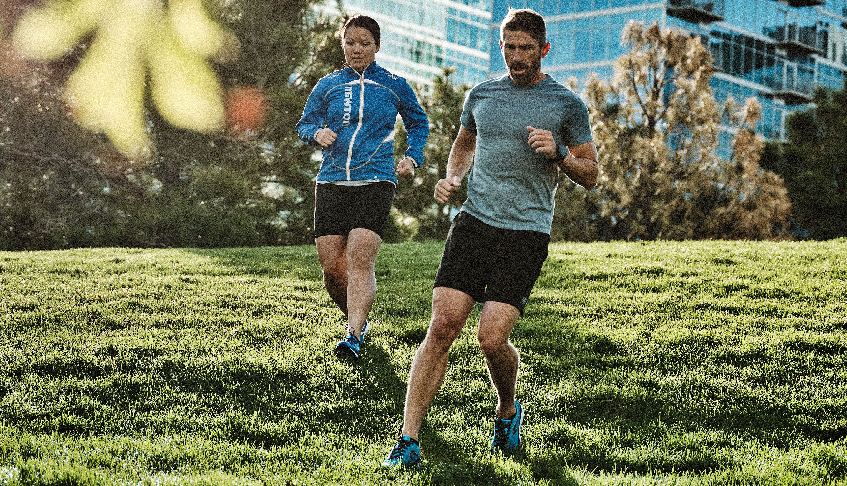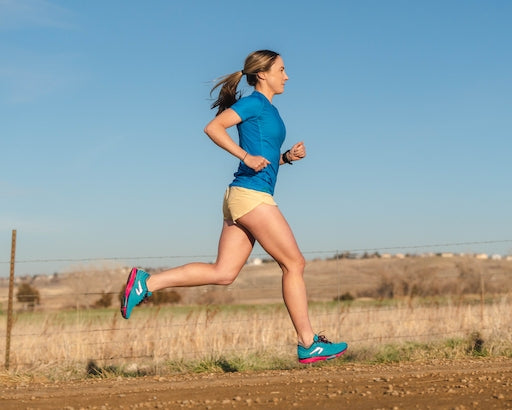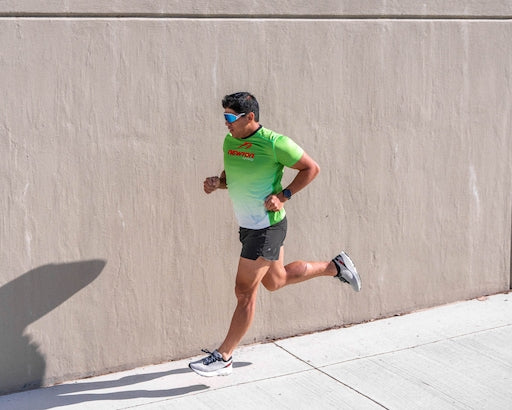
Injury Prevention Tips for Runners
training tips25 February 2022
By – Dr. Victoria Sekely – DPT, CSCS
Every runner has been told at one point or another that they are crazy to love a sport like running. Statements like “running is bad for you” or “if you run, you’re just asking to get injured” or “running caused X pain so I was told I should never run again” are extremely common (and honestly, often made by non-runners). I’m not going to lie to you, the percentage of runners that get injured every year is a very high number. Chances are if you’re reading this article, you’ve probably dealt with at least one or more running injuries.
But that doesn’t mean you should give up the sport that you love. The benefits of running actually outweigh the risks. From lowering your risk of cardiovascular disease and diabetes, running is extremely beneficial for your health, as long as you can keep yourself going. So how can we work towards lowering injury risk and keep ourselves running long-term? Here are a few tips that can help keep you on the road (or trail)!
- WARM UP BEFORE YOU RUN.
We’ve all done it: the alarm goes off in the morning, you roll out of bed and you’re on the road 5 mins later. If you really think about it, that’s a pretty big shock to your system. After lying or sitting in one position for a long time, you can’t expect your body to perform at its best without preparing it to do so beforehand. A proper warm-up will dilate your blood vessels, increasing circulation, which feeds your muscles with more oxygen, ultimately improving your athletic performance and helping protect from injury. So, what does a proper warm-up look like? Generally, in order to best prepare your body, you want to keep your warm-up dynamic. Static stretching is no longer advised and can do more harm than good. So keep your body moving and try movements that mimic running… like squats, lunges, heel raises and jumping jacks. The truth is your warm-up does not have to be complicated! So, set that alarm 5 mins earlier and add a dynamic warm-up into your routine.
- GET COMFORTABLE WITH STRENGTH TRAINING
Many runners believe the myth that strength training will make you too bulky, weigh you down and make you a slower runner. It’s simply not true, and actually the opposite has been shown in the research. When I explain this to people, I often get the question “but doesn’t running strengthen my muscles?”. Yes, maybe someone new to running will see initial muscular growth from running alone, however a plateau is reached fairly quickly, and increasing running mileage at that point will not continue to strengthen your muscles. The reality is that running is a repetitive motion. You’re doing basically the same stride for about 1,000 steps per mile. Generally, our bones and muscles don’t really like doing the same thing over and over and over, which is why we so often see overuse injuries in runners. That’s where strength training comes in. Strength training allows your muscles to build in different ways, which makes them more resilient and efficient when running. Meaning that when your muscles get stronger, they don’t have to work as hard when you’re running. Love that for them!
- PROPER RECOVERY
Let’s be real – runners are intense. All we want to do is run, and when we’re not running, we’re thinking about when our next run is. This makes the concept of recovery a very tough one. I often hear that someone’s “recovery” is a 5-10 min stretching and foam rolling routine after a run. While this might feel good, these routines actually do little other than make you feel good in the moment and for a limited time afterward. The purpose of recovery is basically to stop you from overdoing it. As I mentioned previously, the majority of injuries runners face are due to overuse or from doing too much too soon. This makes actual recovery – like giving your body enough time and rest between runs – of the utmost importance. So, what does a proper recovery routine look like? You’ll want to achieve a few things – rest for your legs, nutrition and hydration for your body, and good sleep. These are all WAY more important than that hamstring stretch!
- PERSONALIZED TRAINING PLAN
A training plan that is catered to your goals helps keep you on track and allows for variability in your training. Working with a run coach who understands your schedule and background can be instrumental in keeping your running and training efficient so you can achieve any goal you set for yourself. A big misconception that I often hear from runners is they think they should be running hard and fast on every run. This is false and not only affects your performance, but also increases your risk of injury. Following a proper training plan will make sure you are hitting certain milestones while also giving your body adequate rest and recovery.
- DON’T WAIT TO SEEK MEDICAL GUIDANCE
It happens to the best of us – we feel a little something in our ankle or hip and because we just want to keep running, we ignore it; that is, until we can’t run another step without blinding pain. What would’ve started as easy and quick rehab quickly became something more complicated. If we listen to our bodies sooner, we can avoid the problem getting worse. Believe me, I understand. It’s scary to think you may have to take time off running! The good news is, that most running injuries will not require you to stop running completely! If you talk to a medical professional who understands runners, I can almost guarantee you won’t have to take as much time off as you may think. The sooner you seek help, the quicker you’ll be back on the road pain-free!
- SHOES!
I’d be remiss not to talk about the effect of footwear on running injuries! To be completely honest, if you’re wearing a shoe that you’re comfortable in, and you’re not currently injured, don’t change your shoes for no reason. We could get into all the little details about which shoe is perfect for different types of feet, but at the end of the day every single person is different, and I find that comfort is the most important factor. What I do recommend is for runners to have at least 2-3 different types of shoes (one light racing shoe, one more stable “cushioned’ shoe and one in between). Our bodies love variety (as I mentioned earlier) and running in multiple types of shoes can be very beneficial.
I hope you have found all of this information helpful, and I hope it keeps you running as long as possible!


